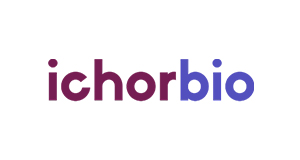Bulk anti-Human CD5 antibody (UCHT-2)
Bulk anti-Human CD5 antibody (UCHT-2), Host: Mouse, Mouse IgG1
Artikelnummer
ICH1174-100MG
Verpackungseinheit
100mg
Hersteller
Ichorbio
Verfügbarkeit:
wird geladen...
Preis wird geladen...
Target: CD5.
Clone: UCHT-2.
Specificity: Mouse Anti-Human CD5 (Clone UCHT-2) recognizes Human CD5. Anti-Human CD5 recognizes a human T-lymphocyte surface membrane antigen (Mr 67 kDa).
Purification method: This monoclonal antibody was purified using multi-step affinity chromatography methods such as Protein A or G depending on the species and isotype.
Antigen Distribution: The CD5 antigen is present on approximately 70% of normal peripheral blood lymphocytes and >90% of all T-lymphocytes. T-lymphocytes in the thymus stain weakly while peripheral T-cells stain strongly. Monocytes, granulocytes and NK cells are not stained.1 Anti-CD5 also reacts with a distinct subset of normal B-lymphocytes, occasional cells in B-lymphocyte areas of spleen and lymph node, and most Ig+ B-chronic lymphoblastic leukemia (CLL) cells. The CD5 antigen has also been shown to be present on some lymphomas.
Background: Anti-Human CD5 can be used in research to study B-lymphocyte subsets or characterization of leukemias and lymphomas.
Concentration: ≥ 5.0 mg/ml.
Formulation: This monoclonal antibody is aseptically packaged and formulated in 0.01 M phosphate buffered saline (150 mM NaCl) PBS pH 7.2 - 7.4 with no carrier protein, potassium, calcium or preservatives added.
Purity: ≥95% monomer by analytical SEC, >95% by SDS Page.
Endotoxin: <1.0 EU/mg as determined by the LAL method.
Aggregation: Aggregation level ≤ 5%.
Use: Products are for research use only. Not for use in diagnostic or therapeutic procedures.
Clone: UCHT-2.
Specificity: Mouse Anti-Human CD5 (Clone UCHT-2) recognizes Human CD5. Anti-Human CD5 recognizes a human T-lymphocyte surface membrane antigen (Mr 67 kDa).
Purification method: This monoclonal antibody was purified using multi-step affinity chromatography methods such as Protein A or G depending on the species and isotype.
Antigen Distribution: The CD5 antigen is present on approximately 70% of normal peripheral blood lymphocytes and >90% of all T-lymphocytes. T-lymphocytes in the thymus stain weakly while peripheral T-cells stain strongly. Monocytes, granulocytes and NK cells are not stained.1 Anti-CD5 also reacts with a distinct subset of normal B-lymphocytes, occasional cells in B-lymphocyte areas of spleen and lymph node, and most Ig+ B-chronic lymphoblastic leukemia (CLL) cells. The CD5 antigen has also been shown to be present on some lymphomas.
Background: Anti-Human CD5 can be used in research to study B-lymphocyte subsets or characterization of leukemias and lymphomas.
Concentration: ≥ 5.0 mg/ml.
Formulation: This monoclonal antibody is aseptically packaged and formulated in 0.01 M phosphate buffered saline (150 mM NaCl) PBS pH 7.2 - 7.4 with no carrier protein, potassium, calcium or preservatives added.
Purity: ≥95% monomer by analytical SEC, >95% by SDS Page.
Endotoxin: <1.0 EU/mg as determined by the LAL method.
Aggregation: Aggregation level ≤ 5%.
Use: Products are for research use only. Not for use in diagnostic or therapeutic procedures.
| Artikelnummer | ICH1174-100MG |
|---|---|
| Hersteller | Ichorbio |
| Hersteller Artikelnummer | ICH1174-100MG |
| Verpackungseinheit | 100mg |
| Mengeneinheit | STK |
| Reaktivität | Human |
| Klonalität | Monoclonal |
| Methode | Immunohistochemistry (frozen), Flow Cytometry, Functional Assay |
| Isotyp | Mouse IgG1 |
| Wirt | Mouse |
| Produktinformation (PDF) | Download |
| MSDS (PDF) | Download |

 English
English







